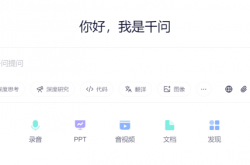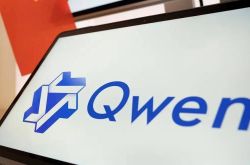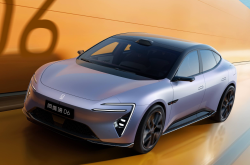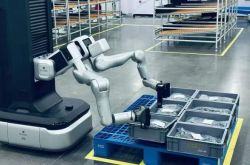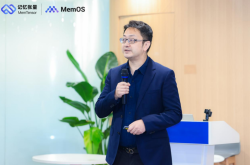Industry AI pioneers, why is the network the first step?
![]() 07/18 2025
07/18 2025
![]() 616
616
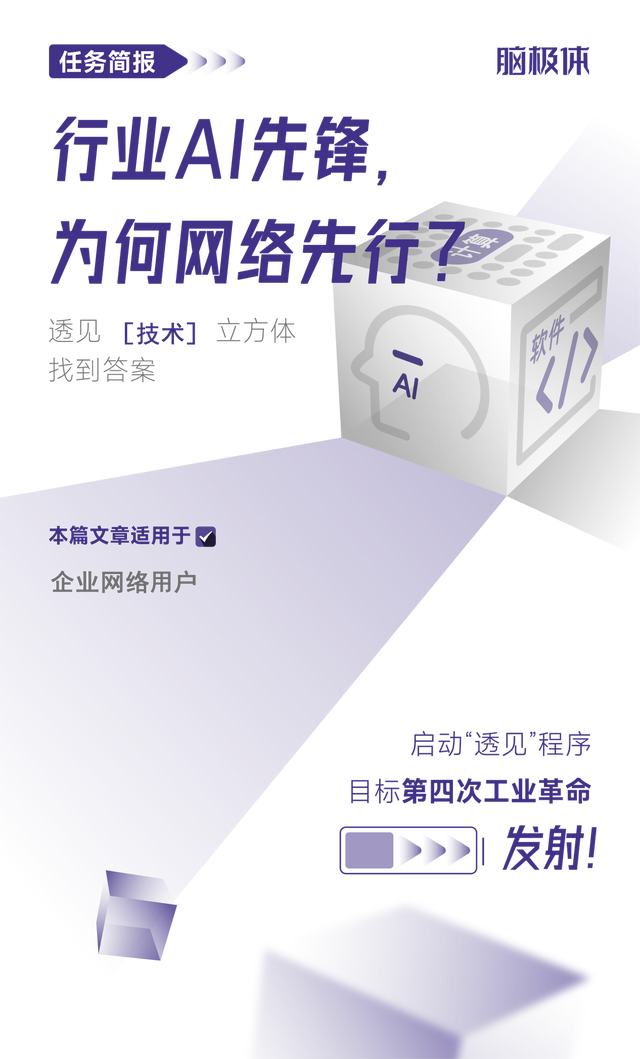
After communicating with many enterprise personnel, there is one sentence that I still remember vividly. They said: The industrial economy defined by electricity has excess capacity, the real estate value supported by land has peaked, and the intelligent value nurtured by data is just beginning to sprout. AI is the new racecourse for the development of all industries.

Indeed, every era has a iconic economic engine, and for today's various industries, AI is the most certain bonus racecourse. However, to transform AI technology into intelligent value, it is necessary to fully unleash the potential of data, which cannot be separated from data communication networks.
Just like the power grid in the industrial economy and the subway in the land economy, the network is an indispensable infrastructure in enterprise intelligence. To help enterprises compete in the new AI racecourse, the data communication industry also needs continuous upgrades and evolution.
So, how does the data communication industry respond to the trend of intelligence? What is the direction of product and technology upgrades? Can it meet the deep AI needs of various industries?
Compared to abstract methodologies, everyone is more concerned about real exploration and practice. We might as well start with the intelligent stories of several industry pioneers to see how the data communication industry brings intelligent value to enterprises.

Not long ago, at the Pinzhi Connection Data Communication Business Market Innovation Summit held in Shenzhen, we heard the true views on intelligence from industry pioneers on the front lines.
One type of intelligent pioneer is the ToC industry that faces users directly.
For example, Shenzhen Xiaomeisha Resort. According to Yang Yifan, Deputy Minister of the Wisdom and Informatization Department of Shenzhen Tefa Xiaomeisha Investment Development Co., Ltd., the daily passenger flow of the Ocean World is more than 20,000 people. During the peak period of cultural tourism, the network load is difficult to meet. Moreover, the decoration of the ocean venues is delicate and complex, which will also block the transmission of network signals. Traditional network equipment has limited transmission rates, limited coverage, and unsightly wiring modifications, which cannot meet the high-quality networking needs of hotel guests roaming within the resort.
In the end, Xiaomeisha discussed with Huawei many times, actively embraced technological innovation, and actively introduced the algorithm capabilities of multi-protocol APs. Through a high-quality 10-gigabit campus network, it has consolidated an omnipresent and seamlessly connected experience, empowering cultural tourism with technology.

When it comes to smart campuses, Fan Shixi, Director of the Education Technology and Information Center of Shenzhen Polytechnic, has a deep personal experience. He said that teachers and students used to frequently complain about campus network issues, and he would be terrified at the mention of Wi-Fi. Sometimes when the network went down, he would simply stay on site and attend classes with students in the classroom.
After the network upgrade, Teacher Fan also became more confident: "After upgrading to Wi-Fi 7, I eagerly hope someone will talk to me about Wi-Fi. As long as you dare to make a request, I dare to fulfill it." Not only has the wireless internet experience of teachers and students improved, but various software can also be used very smoothly. Moreover, the dizziness problem of XR teaching and the remote observation of enterprise factory experiments and training, these experience problems of smart classrooms have all been solved by the network. Since network failures rarely occur, coupled with AI-assisted operation and maintenance of smart campuses, the operation and maintenance workload of IT personnel has also been greatly reduced.
Another IT person who has a deep personal experience of network shortcomings is Wang Wenjun, Director of the Information Department of Shenzhen Hospital of Integrated Traditional Chinese and Western Medicine.

After the completion of the hospital's informatization construction, there are many devices connected to the network, including PDAs, mobile ward rounds, ECGs, mobile ward rounds using mobile phones, mobile ward rounds using tablets, and all vital sign monitoring devices for IoT devices. However, in the past, traditional networks would experience packet loss. Therefore, the hospital established a pilot project of Huawei Wi-Fi 7 in "Dongtang Community Health Service Center", solving the problems of nurse ward rounds, doctor ward rounds, and mobile ward rounds through Wi-Fi 7 and zero roaming. Many AI products have also been created, such as drone drug delivery and remote diagnosis and treatment. The electrocardiograms taken in the community health service center are all transmitted to the hospital and patients' mobile phones through the network, realizing resource sharing and greatly facilitating diagnosis and treatment.
In addition to ToC scenarios, a large number of enterprises themselves also have intelligent upgrade needs, and ToB scenarios involve business data and production safety, so the requirements for the network are often more stringent.
For example, Shenzhen Today International Logistics Technology Co., Ltd. When holding video conferences or remote telephone conferences with clients, traditional office networks often encounter problems, especially during important meetings. There are also AGV carts within the park that often stop working when transporting materials, and the logistics return of barcode scanners is inaccurate. After investigating the reason, it was found that the availability of Wi-Fi was too low.
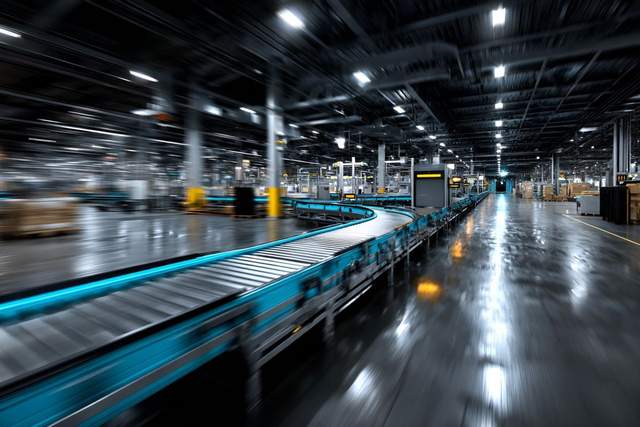
Finally, the company decided to replace all the latest Huawei network equipment, achieving full coverage of wireless signals in the park, with a roaming success rate of more than 4 nines. It also improved the AI intelligent operation and maintenance capabilities of the park by deploying NCE Campus and Campus Insight technologies.
Through the intelligent practices of the above industry pioneers, it is not difficult to see a consensus: for industrial transformation, the network comes first. Only with the support of advanced data communication infrastructure can industry scenarios be deeply integrated with new AI technologies, taking the lead in the wave of intelligence. So the next question is, how should the data communication industry change to meet the networking needs of thousands of industries?

As various industries rush to embark on the AI racecourse, it is necessary to plan the network infrastructure in advance.
As Wang Lei, President of Huawei's Data Communication Product Line, mentioned at the summit, the current networks of most enterprises cannot meet the requirements, and AI applications are driving a new round of upgrades to network infrastructure.
Wang Lei believes that the goal of upgrading network infrastructure is no longer a simple increase in bandwidth, but high-quality, best-experience connectivity, which requires exploring new technologies and breakthroughs. To this end, Huawei upgraded the "Xinghe AI Network", deeply empowering AI technology in network equipment and the network brain, realizing the intelligent reshaping of the network itself and improving "quality" with "intelligence".

If we draw a roadmap for network upgrades for enterprises, the starting point of the first stop should be technological innovation.
For example, Huawei's Wi-Fi 7 technology, through dynamic zoom smart antennas, exclusive Wi-Fi secret shield technology, etc., allows enterprise-grade AP products to lead in bandwidth, roaming, latency, security (zero leakage of air interface data), and other capabilities. Huawei's Xingmai PEN passive Ethernet all-optical network creates a 10-gigabit ultra-broadband network that supports Minimalism deployment, significantly reducing network construction costs and power consumption. Combined with the iMaster NCE platform and NetMaster network intelligence body of the Xinghe AI network system, AI is deeply integrated into the entire lifecycle of network operation and maintenance.
These technological innovations inject "intelligent genes" into the network, helping thousands of industries achieve efficient, secure, and sustainable digital and intelligent transformation in the AI era, becoming the connection base of the AI era and foreshadowing the subsequent release of capabilities.
Second stop: use the "partner system" to open up the transmission link of intelligent value.
The value of advanced technology can only be truly realized when it reaches enterprises. Huawei regards the collaborative system of "partners + Huawei" as a technology delivery network, so that intelligent connections can benefit more enterprises.
Pu Qiang, Director of the CommercialMKT and Solution Sales Department of Huawei China Government and Enterprise Business, mentioned that relying on the "partners + Huawei" system, research, marketing, sales, supply, and service support partners in combat along the entire project lifecycle, and proposed the "2025 Nebula Plan" to help partners' businesses develop rapidly.
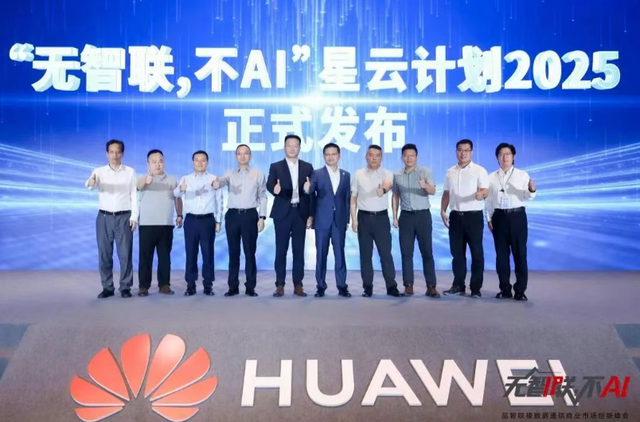
According to Pu Qiang, Huawei will continue to open marketing resources to partners this year. Focusing on scenarios such as education, healthcare, and hotels, more than 300 marketing activities will be opened. Huawei's exhibition halls, model sites, and exhibition areas can all become partners' marketing resources.
Whether it is a leading enterprise or a small, medium, or micro institution, through the partner system, they can not only gain business opportunities but also become value transmitters of the latest technology. Huawei's innovation achievements have also gone from the laboratory to thousands of industries.
The third and final stop is to take root in the campus scenario, making intelligent value visible and tangible.
The surge in digital and intelligent applications of enterprises has impacted traditional campus networks with a wave of data. Therefore, the endpoint of network upgrades is the actual experience improvement of enterprise campuses. What method can enable one-click upgrades of the campus network and seamless accommodation of campus enterprises in smart campuses? Huawei has also brought scenario-based solutions to create a campus network experience that meets industry needs, allowing AI to truly take root in enterprises.

Chen Zhiwei, Vice President of the Campus Network Field of Huawei's Data Communication Product Line, shared Huawei's future campus network architecture, which needs to be experience-centric and build a high-quality 10-gigabit campus network.
Specifically, the campus network needs to carry a large number of intelligent terminals and audio and video conferences for anytime, anywhere office work. The currently most popular AI Agent requires high-speed access and interconnection of 10G or even 100G. Therefore, the campus network continuously innovates in terms of extreme speed roaming, sensory fusion, intelligent operation and maintenance, audio and video experience guarantee, and security, helping the digital and intelligent transformation of the main industries and main scenarios in the commercial market.
It can be said that the intelligent transformation of the campus network is the last transmission checkpoint for enterprises to truly enjoy the dividends of AI.
Starting from technological innovation, accelerating through ecosystem collaboration, and then taking root in scenarios, Huawei's data communication provides a networking idea that forms a closed loop of technology-ecosystem-scenario, allowing us to see a comprehensive and complete roadmap for network upgrades in the AI era.

When the wind comes, those who have repaired the runway in advance are often the first to take off. Nowadays, all industries are competing to run into the AI racecourse, and Huawei's data communication products and solutions are like an accelerated runway, which can bring several values to enterprises:
First is stability. It stably supports massive devices and business continuity. When enterprise data becomes a core asset, the "stability" of the network is also reflected in the security level, isolating risks and maintaining the security bottom line of intelligent transformation. This allows enterprises to focus on business innovation without being distracted by the network when promoting intelligence.
Second is speed. Whoever completes network upgrades and lands AI applications faster will be able to seize the initiative. Huawei's extremely simple deployment and partner collaboration allow enterprises to advance faster in the intelligentization process.

Third is practicality. What enterprises ultimately want from investing in intelligence is tangible returns. Huawei takes "experience as the core" to make the value of network upgrades a reality. From the perspective of cost optimization, the self-healing ability and automated operation and maintenance of AI-native networks significantly reduce manual intervention. From the perspective of experience improvement, scenario-based solutions directly address industry pain points, translating into improved user satisfaction, which is a quantifiable value. Every penny invested by an enterprise in the network can be converted into visible efficiency, experience, and revenue.
Following Huawei's network upgrade roadmap, the next industry AI pioneer is racing ahead on the AI racecourse.



